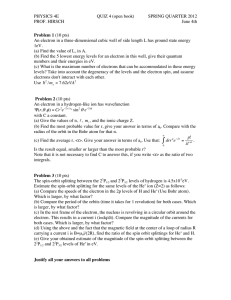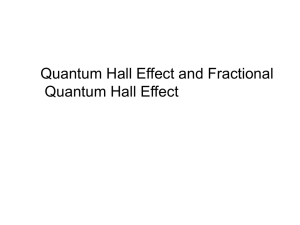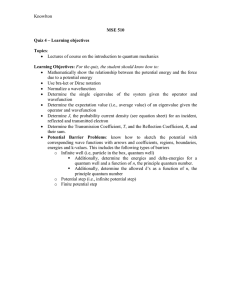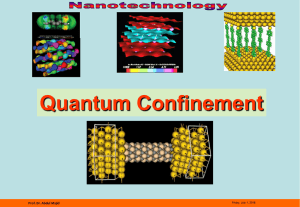PHYSICS 4E QUIZ 4 (open book) SPRING QUARTER 2016 PROF. HIRSCH
advertisement
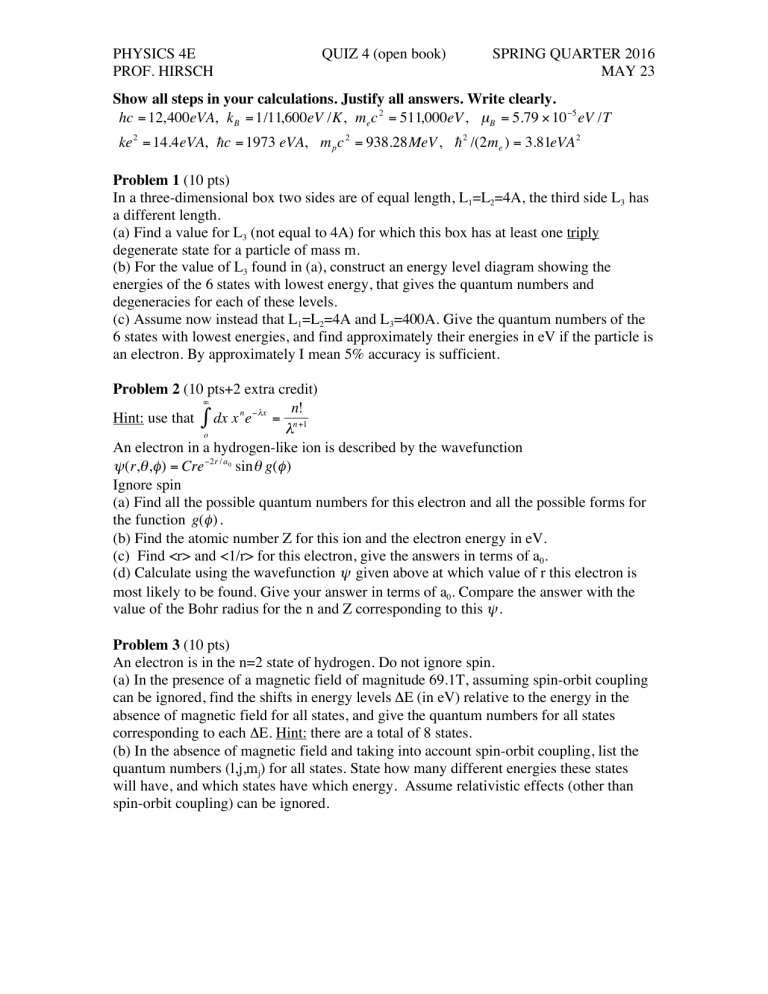
PHYSICS 4E PROF. HIRSCH QUIZ 4 (open book) SPRING QUARTER 2016 MAY 23 Show all steps in your calculations. Justify all answers. Write clearly. hc = 12,400eVA, k B = 1/11,600eV /K, me c 2 = 511,000eV, µB = 5.79 " 10 #5 eV /T ke 2 = 14.4eVA, hc = 1973 eVA, m p c 2 = 938.28MeV, h 2 /(2me ) = 3.81eVA 2 ! ! Problem 1 (10 pts) In a three-dimensional box two sides are of equal length, L1=L2=4A, the third side L3 has a different length. (a) Find a value for L3 (not equal to 4A) for which this box has at least one triply degenerate state for a particle of mass m. (b) For the value of L3 found in (a), construct an energy level diagram showing the energies of the 6 states with lowest energy, that gives the quantum numbers and degeneracies for each of these levels. (c) Assume now instead that L1=L2=4A and L3=400A. Give the quantum numbers of the 6 states with lowest energies, and find approximately their energies in eV if the particle is an electron. By approximately I mean 5% accuracy is sufficient. Problem 2 (10 pts+2 extra credit) " n! Hint: use that # dx x n e $ %x = n +1 % o An electron in a hydrogen-like ion is described by the wavefunction " (r,# , $ ) = Cre %2r / a 0 sin # g($ ) Ignore spin ! (a) Find all the possible quantum numbers for this electron and all the possible forms for the function g(" ) . (b) Find the atomic number Z for this ion and the electron energy in eV. (c) Find <r> and <1/r> for this electron, give the answers in terms of a0. (d) Calculate using the wavefunction " given above at which value of r this electron is ! likely to be found. Give your answer in terms of a . Compare the answer with the most 0 value of the Bohr radius for the n and Z corresponding to this " . ! Problem 3 (10 pts) An electron is in the n=2 state of hydrogen. Do not ignore spin. (a) In the presence of a magnetic field of magnitude!69.1T, assuming spin-orbit coupling can be ignored, find the shifts in energy levels ΔE (in eV) relative to the energy in the absence of magnetic field for all states, and give the quantum numbers for all states corresponding to each ΔE. Hint: there are a total of 8 states. (b) In the absence of magnetic field and taking into account spin-orbit coupling, list the quantum numbers (l,j,mj) for all states. State how many different energies these states will have, and which states have which energy. Assume relativistic effects (other than spin-orbit coupling) can be ignored.




